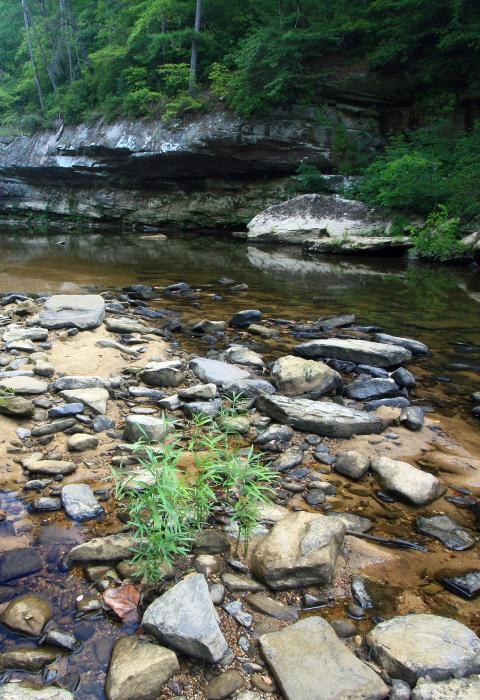Sipsey Fork of the West Fork River
Alabama
The Sipsey Fork of the West Fork River is situated in northwestern Alabama. The river exhibits a blend of striking landforms, diverse plant life, and outstanding scenery. Steep canyon walls and sandstone bluffs, ranging in height from 30 to 100 feet, and cascading waterfalls combine with a variety of plants native to the Coastal Plain and the Appalachian Mountains to make the river one of the most scenic areas in the region.
Waterflow on the Sipsey Fork of the West Fork River is highly dependent on rainfall occurrences. During summer drought seasons, the river has a low stream flow of only a few inches deep mixed with occasional deep pools. During the fall, winter and spring months, river levels can rise from low flow to flood stage in a matter of hours due to rapid run-off, slow absorbing soils, and highly intense rainstorms. After rainfall subsides, the river levels tend to recede rapidly.
The official designation in the Wild & Scenic Rivers Act is the "Sipsey Fork of the West Fork." However, the name "West Fork" does not appear on any official U.S. Geological Survey maps.
Designated Reach
October 28, 1988. From the confluence of Sandy Creek upstream to the confluence of Thompson Creek and Hubbard Creek. Hubbard Creek from its confluence with Thompson Creek upstream to Forest Road 210. Thompson Creek from its confluence with Hubbard Creek upstream to its origin. Tedford Creek from its confluence with Thompson Creek upstream to section 17, T8S, R9E. Mattox Creek from its confluence with Thompson Creek upstream to section 36, T7S, R9W. Borden Creek from its confluence with the Sipsey Fork upstream to its confluence with Montgomery Creek. Montgomery Creek from its confluence with Borden Creek upstream to the SW 1/4 of section 36, T7S, R8W. Flannigan Creek from its confluence with Borden Creek upstream to section 4, T8S, R8W. Braziel Creek from its confluence with Borden Creek upstream to section 12, T8S, R9W. Hogood Creek from its confluence with Braziel Creek upstream to section 7, T8S, R8W.
Outstandingly Remarkable Values
Geology
The overhanging bluffs can top 100 feet in the deep gorges creating many dramatic rock formations.
Recreation
The corridor contains excellent hiking opportunities and spaces for solitude. Occasionally, the water levels are good for canoeing, as well.
Scenery
Overhanging bluffs and rock shelters form distinctive gorges. The variety of plants ranges from large, mature trees to lush understory vegetation. Cascading waterfalls and crystal clear water also add to the unique beauty of the area.

